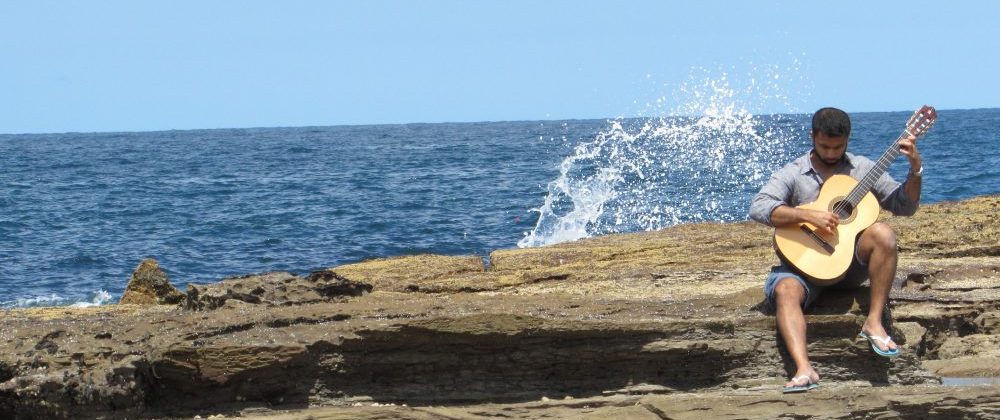As you may know, in recent months I have maintained my work on musician’s focal hand dystonia resolution on this other page, the idea being to keep anything I do in the realm of dystonia resolution neater and less mixed up with things of a more general ‘guitaristic’ or musical nature. While I will no longer be adding pages to the focal dystonia resolution section on this blog, since I still very much think of this space as my ‘home space’, and the site analytics tell me that this blog continues to get a regular readership that is interested in focal dystonia and its resolution, I will still cross-post things I write about FD on my ‘dystonia site’ over here. Here’s my latest post reacting to and evaluating recent surgical interventions in cases of musician’s dystonia from the blogroll on my dedicated FD page, https://musiciansdystoniaresolution.wordpress.com:
If you care to read the post on its original page, or if you want to visit my dystonia resolution site, click here. Meanwhile, here’s the text:
Over the last couple of years, a few stories have emerged from around the world of successful surgical interventions in guitarists with focal dystonia. Going by the news stories that covered procedures in Japan, China, and India, one must applaud all three for having been landmark applications of focused ultrasound (FUS) therapy, deep brain stimulation (DBS), and radio frequency ablation (RFA) respectively, to different forms of focal dystonia in a musician’s brain. The fact that in each case, surgeons were able to variously improve the functioning of a patient’s SM cortex in a real-world situation (guitar playing) via the application of either electrical impulses or selective destruction of brain cells (ablation) illustrates the extent to which brain surgery using a range of techniques can provide solutions to problems of fine motor control centred in the SM cortex.
While giving due credit to the advances in technology and neurosurgical capabilities that made the surgically invasive DBS and RFA, and the remote (and so physically non-invasive) FUS procedures possible, and lauding in particular the brilliant surgeons who performed the above-linked procedures successfully, I find myself having mixed reactions to the idea of neurosurgical intervention as an approach to overcoming task-specific musician’s focal hand dystonia in particular. That said, in the spirit of musing upon landmark achievements in brain surgery towards musician’s dystonia resolution, let me begin by listing some of the positive implications that come to mind:
- DBS has long been known to be a treatment option for various forms of dystonia, most notably (and perhaps most impressively) generalized dystonias. That it has been proven a viable, if somewhat aggressive and no doubt relatively risky, way to overcome musician’s focal hand dystonia is worth knowing. (Why risky, one might ask. Well, sawing or drilling into the head, for starters…) I should note, of course, that the patient in the Chinese success story of the application of DBS to overcome hand dystonia had a generalized problem that affected all aspects of daily life, rather than just his ability to play the guitar – that is to say, his wasn’t a task-specific occupational dystonia. The seriousness and aggressiveness of the method (opening the skull to implant a ‘pacemaker’ in the brain) leads me to think that it will remain a last resort for most musicians with less existentially compromising task-specific occupational dystonias. It’s good to know that the big guns do work, though.
- The recent application of RFA to ablate (destroy) a portion of an Indian guitarist’s thalamus, successfully clearing up a case of task-specific focal hand dystonia in his left (fretting) hand, is welcome news for any stringed instrument player struggling against a fretting hand dystonia. Left hand (aka fretting hand) task-specific focal dystonias are notoriously less responsive to conservative interventions, including SMR/CIMT, emotional therapy, and SDE, and resolving them via graduated exposure/systematic desensitization therapy, though effective, is a laborious and expensive process, involving a protracted phase of intensive sessions with a therapist. It seems to me that while the foundational steps for the RFA process remain highly invasive (drilling into the skull, once again…) it is noteworthy that RFA has been proven effective in resolving precisely the sort of task-specific musician’s focal hand dystonia that is least responsive to cheaper and more conservative conditioning-based therapies such as SMR and CIMT.
- The experimental application of FUS to ablate the ventrooralis (Vo) nucleus of the thalamus of a dystonic guitarist at Tokyo Women’s Medical University last year is most impressive for the fact that it was entirely non-invasive. No cuts were made in the patient’s skull, and yet a ‘laser of sound’ was converged upon a specific point within the patient’s head to destroy a tightly defined section of the patient’s Vo nucleus, apparently successfully resolving a case of task specific musician’s focal hand dystonia in a guitarist’s right hand. I find myself reacting more tentatively than positively to this particular application of the technology and procedural approach (more on that below), but it is worth noting the possibly wonderful implication here – that where thalamic ablation via brain surgery is truly necessary, it may be possible to achieve a positive outcome without any of the risks inherent in opening up a patient’s skull in order to perform either RFA or DBS. The study that administered this application of FUS is still underway at the time of my writing this, and of course, one wishes the research team the best, and hopes that FUS proves viable as an alternative to traditional surgery in cases where ablation is necessary.
As I mentioned above, I have mixed feelings about some aspects and implications of the successful surgical interventions described in the three stories to which I have referred. Most of all, I am somewhat uneasy with the idea of recourse to some form of surgery being considered the default solution to task-specific focal hand dystonia in musicians, which is of course the form of dystonia that most musicians who are affected by focal hand dystonia experience. My reasons for this are:
- Focusing on the thalamus may not be the most holistic approach to reversing a task-specific problem that arises from interaction between areas of the SM cortex. It also comes with a number of risks. Surgical interventions all focus on the thalamus. DBS involves the planting of an electrode in that part of the brain, and both RFA and FUS ablate (that is, they burn up or destroy) a small section of the same structure in brain. The function of the thalamus is to relay signals to the sensorimotor cortex. It is, in essence, primarily a relay station. While destruction of a section of this brain structure has been shown to alleviate dystonic symptoms, in cases where an individual affected by task-specific dystonia undergoes this form of treatment, one wonders at the possibility of wider implications to long term neurological functioning resulting from the removal of a part of a brain structure that was relaying neural impulses normally in circumstances outside the one task where the individual experienced dystonia. As much as MEG and MRI scans provide information on the precise location of the parts of the brain that activate to control finger movements in a specific task, even if we can track the pathways of neural activation through the thalamus and basal ganglia, our understanding of how neural impulses travel through the thalamus between the SM cortex and the body is rudimentary. Activity in certain areas of the SM cortex regulates finger movement, and certain other associated cortical activity in the brain of a musician with task-specific focal dystonia (i.e., synaptic activation in other areas of the SM cortex) causes brain cells that carry the homunculus representation of affected fingers to malfunction. Anyone who has read the research in the field will know of Altenmuller et al’s illustration of overlapping cortical representations of fingers – but we don’t know what triggers the said overlapping activations in an otherwise functionally normal SM cortex in cases of task-specific musician’s focal hand dystonia – a logjam somewhere in the thalamus or basal ganglia, problematic associative learning, or something else entirely. Nor, speaking to the surgical approach, do we know exactly though which parts of the thalamus a given precise and exclusive set of neural impulses (and no other cortical activity) would travel, to say nothing of how the flow of impulses up and down through the thalamus would change over time as the individual ages. Permanently constricting the flow of signals to and from the SM cortex in a brain that shows indications of focal dystonia only task-specifically amounts to applying a generalised solution to a specific and conditional problem; it may, in effect, be too aggressive, carrying with it the possibility of wider negative implications to the patient’s ability to execute or maintain functionality outside the previously dystonic (and now presumably surgically-restored) task.
- Cortical adaptation as a result of neuroplasticity underlies the onset of an occupational focal dystonia; it also offers the most robust and stable form of resolution. At its heart, task-specific focal hand dystonia as experienced by musicians is the result of maladaptive learning – specifically, it is the inadvertently trained reflexive activations/hyperflexions of the digits traditionally thought of as ‘dystonic finger/s’. Underpinning the unfortunate maladaptation, as underpinning all learnt reflexive abilities in functional musical capability, is neuroplasticity – the brain’s endless capacity to adapt its structural predisposition under sufficiently (and specifically) stimulating conditions. Often frustratingly for dystonic musicians, creating the right conditions for successful retraining is more an exercise in designing an advanced psychological experiment than it is musical instrument practice. With that said, through incremental advances in our understanding of cortical reconditioning, increasingly more complex manifestations of task-specific musician’s focal hand dystonia are proving to be reversible. Specifically in cases of task-specific focal hand dystonia, affected musicians may be equally well if not better served (and quite possibly far safer) by looking first to conservative approaches to resolving dystonia before considering brain surgery. Resolution through somatosensory reconditioning would carry the advantages of affording: a) stable and lasting changes in the organization of the SM cortex towards, for example, better control of fingers on guitar strings, rather than a constriction of the path by which signals from a maladapted SM cortex travel to the affected digits, and b) since the brain’s natural process of optimisation towards being able to control given physical capabilities happens in the SM cortex, and not in other brain structures like the thalamus, the brain’s capacity to receive and relay sensory and motor impulses would not be artificially impaired in any way.
On balance, I believe that the risks, expense, and poorly-understood long term implications inherent in surgical intervention in cases of musician’s task-specific focal hand dystonia make it an option not to be considered lightly. With that said, for musicians affected with generalising forms of focal dystonia, or musicians affected in ways for which resolution has not yet been reliably understood by more moderate approaches (such as fretting hand dystonias or perhaps even embouchure dystonias), or for those for whom the prospect of returning to making music quickly is more valuable than the combined risk and cost of surgery, the surgical approach has shown itself to be a worthwhile last resort.

